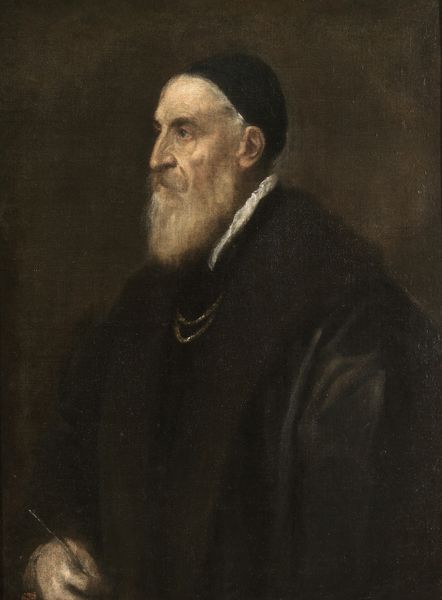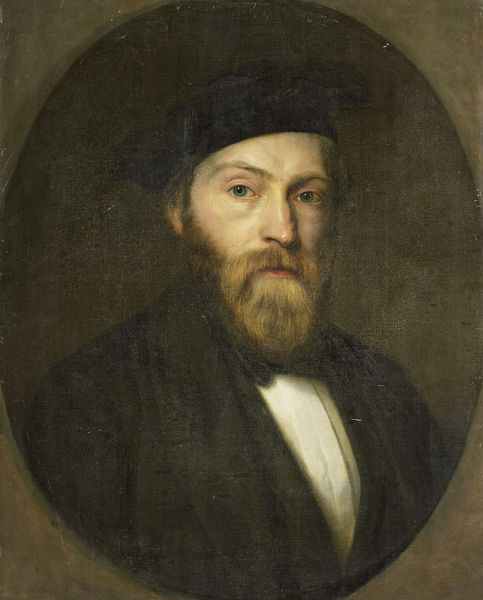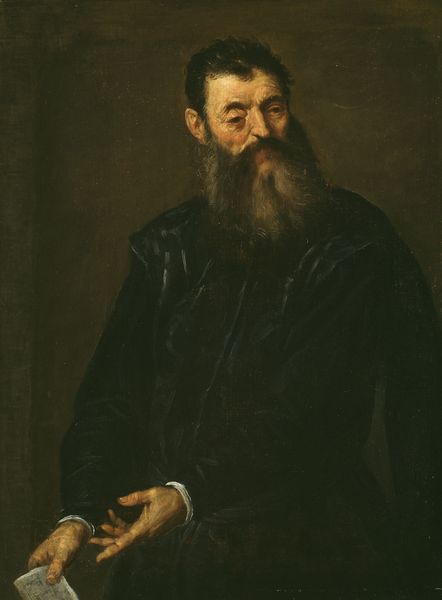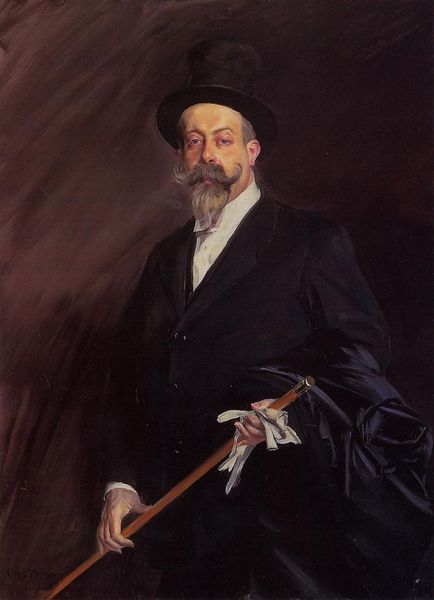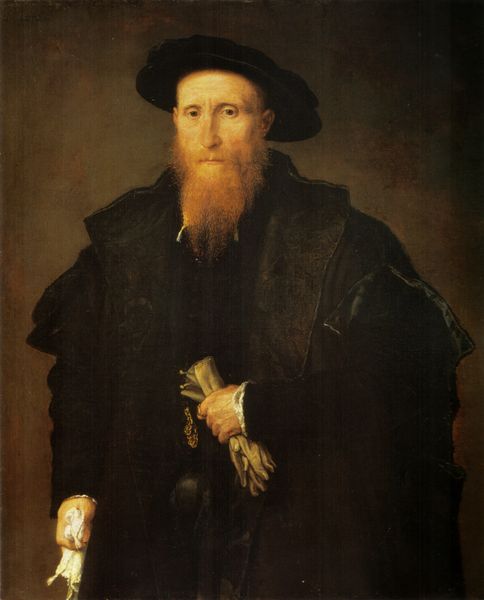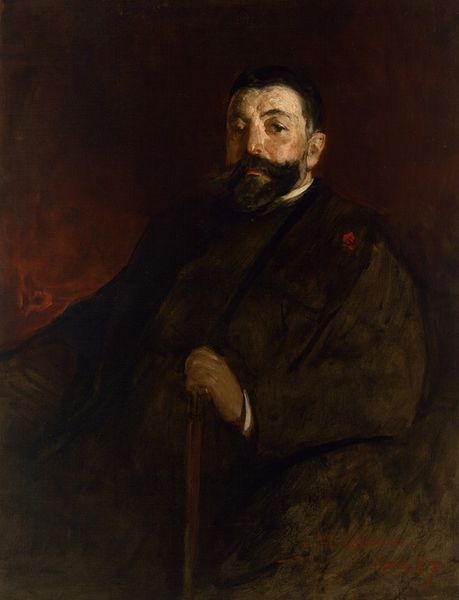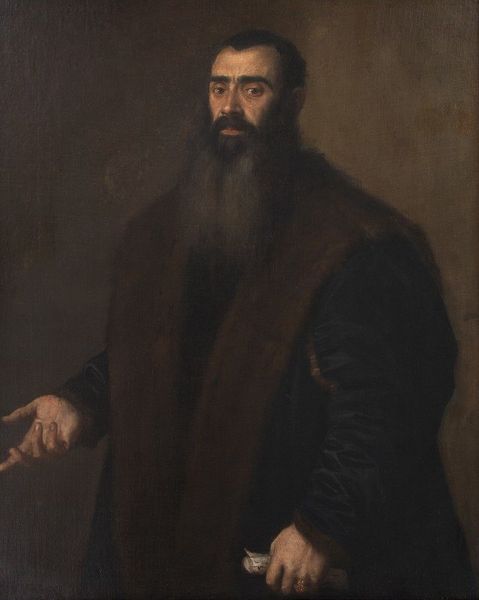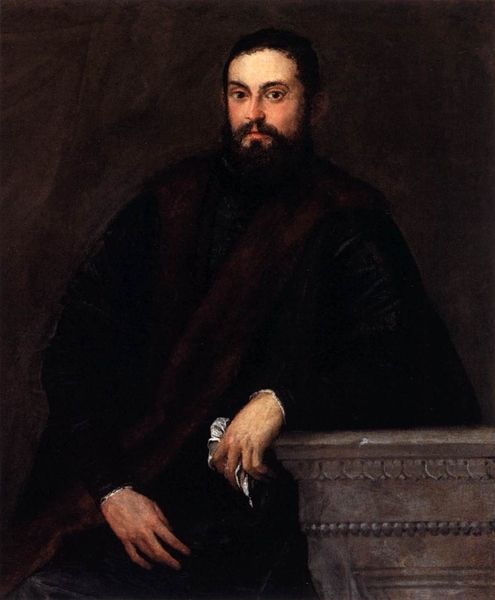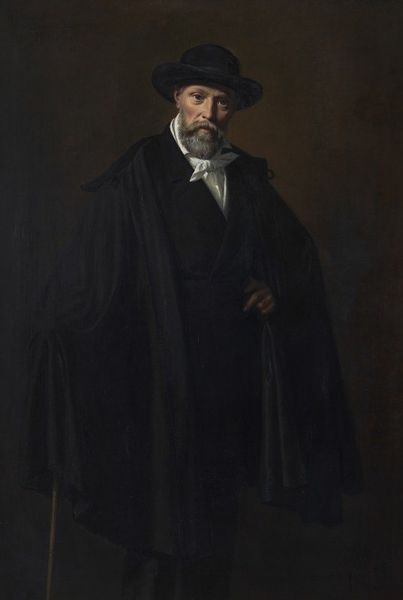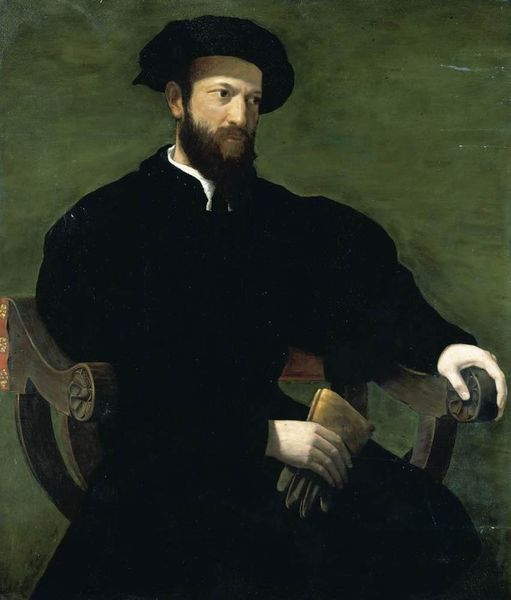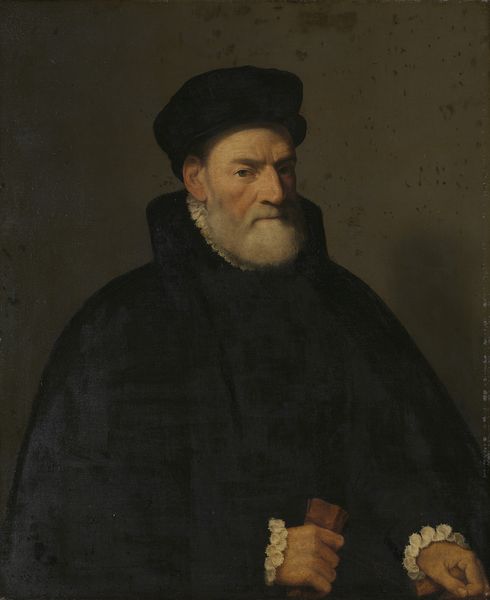
painting, oil-paint
#
portrait
#
portrait
#
painting
#
oil-paint
#
history-painting
#
italian-renaissance
Dimensions: 122 x 205 cm
Copyright: Public domain
Editor: So here we have Titian's "Emperor Charles V Seated," painted in 1548 using oil on canvas. I find it really intriguing, though also somber in tone. What stands out to you in this piece? Curator: Immediately, I consider the context of portraiture as a political tool. In the Renaissance, such commissions were potent statements. How does Titian’s representation of Charles V, within the landscape and architectural setting, reinforce his imperial authority? What do you think it was supposed to communicate about his reign, especially in light of religious and political turmoil at the time? Editor: That's interesting. It seems like the setting places him in power, but also in a setting that seems less concerned with overt grandeur and more concerned with the power of place? Curator: Precisely! And who controls the place, controls the power. Notice Titian places a column behind him and an empire before him: Does this juxtaposition reinforce or complicate the perception of imperial might? The gaze he projects to us - what does it say? Editor: His gaze makes me consider the idea of 'burdened leadership.' Maybe he feels overwhelmed or is at least trying to communicate the difficulty of his decisions? Curator: That's a strong observation. It highlights how Titian's work subtly reveals the tensions and burdens of leadership amidst socio-political upheaval. What kind of "public role" is Titian advancing here for the figure of the Emperor, as it may impact on those he governs? Editor: Considering it that way makes me appreciate how much the artist can shape and guide public perceptions. Thanks! Curator: It's rewarding to consider the layers of history imbued within a painted image. The dynamic between art and society reveals enduring insights.
Comments
No comments
Be the first to comment and join the conversation on the ultimate creative platform.
